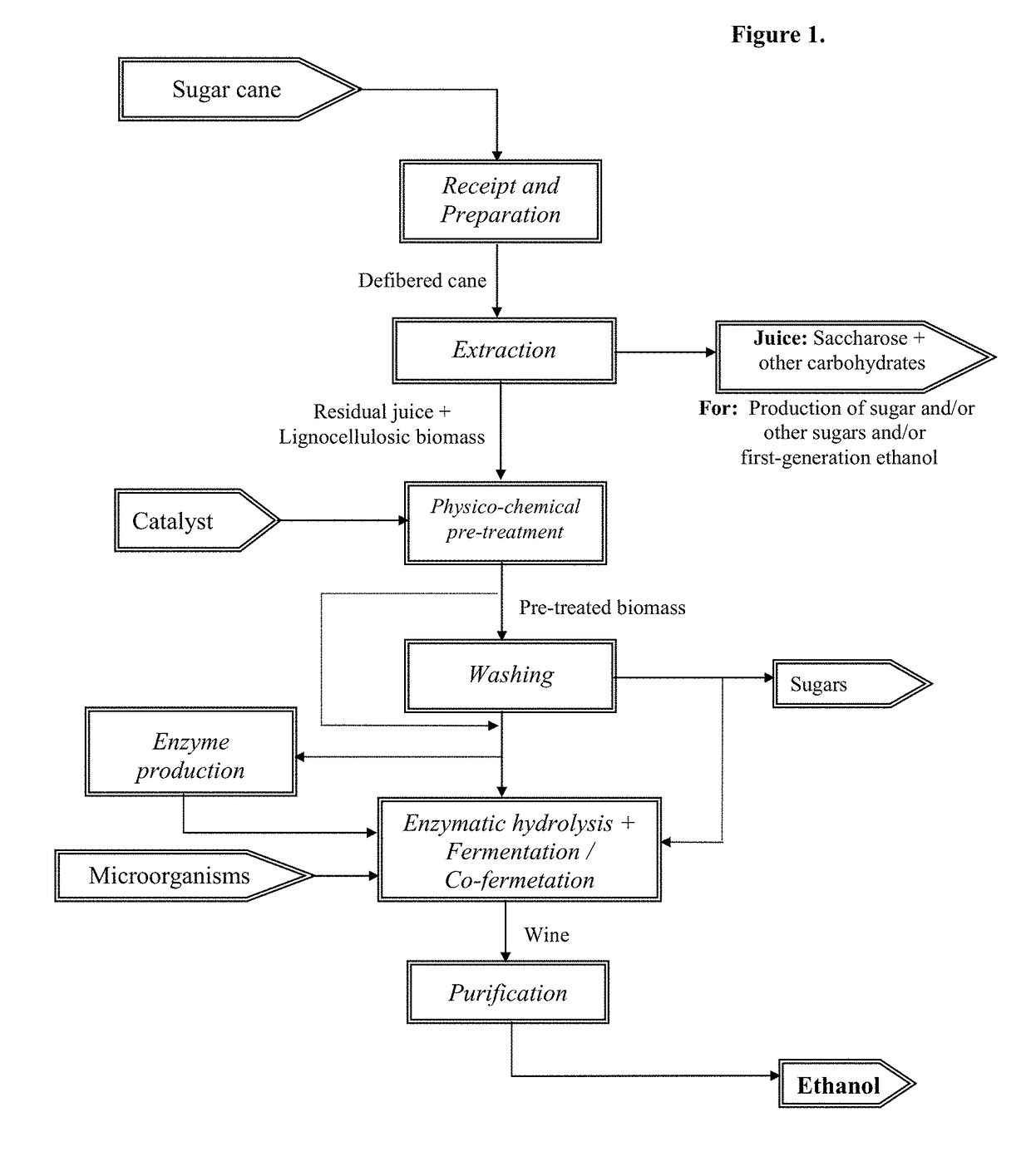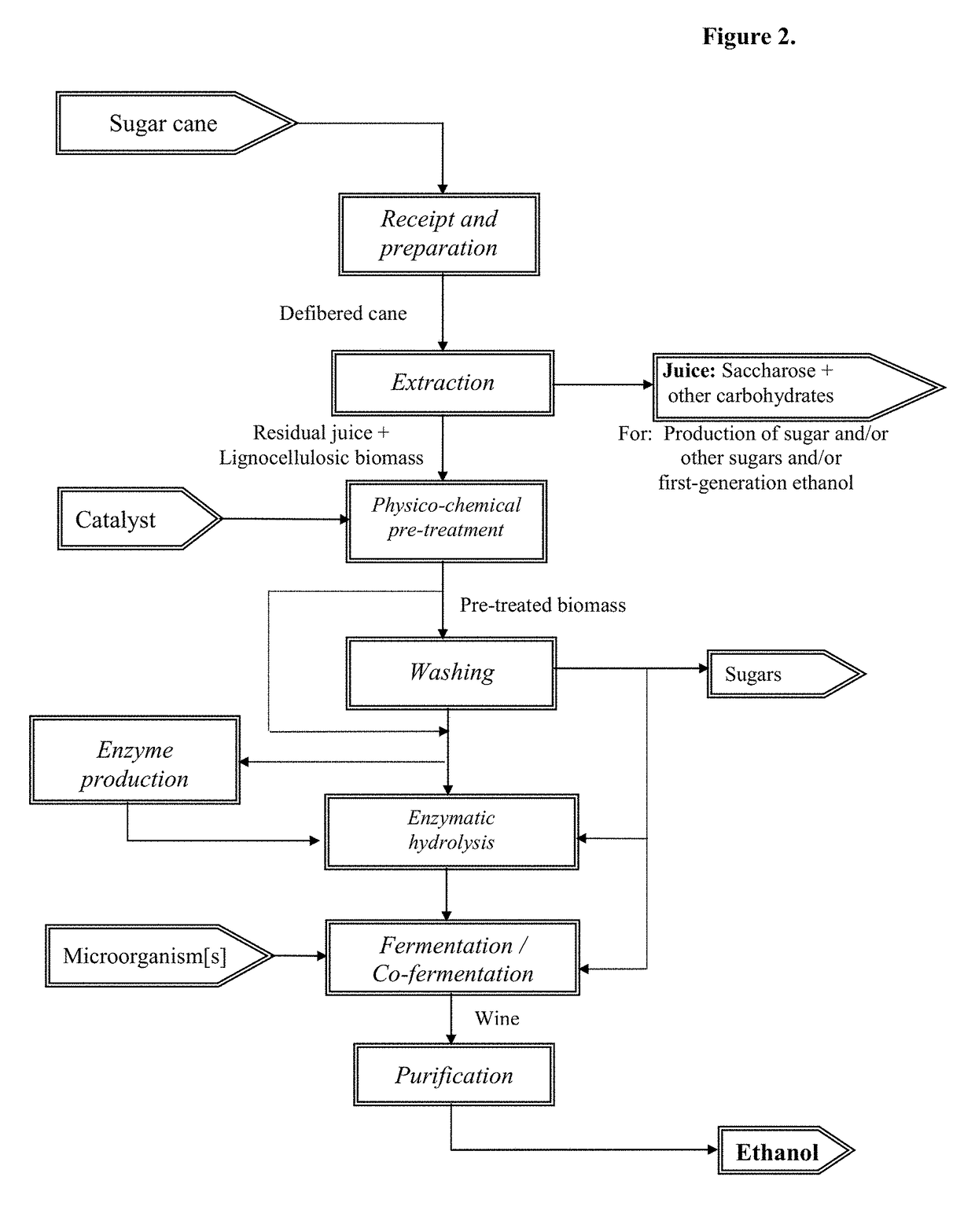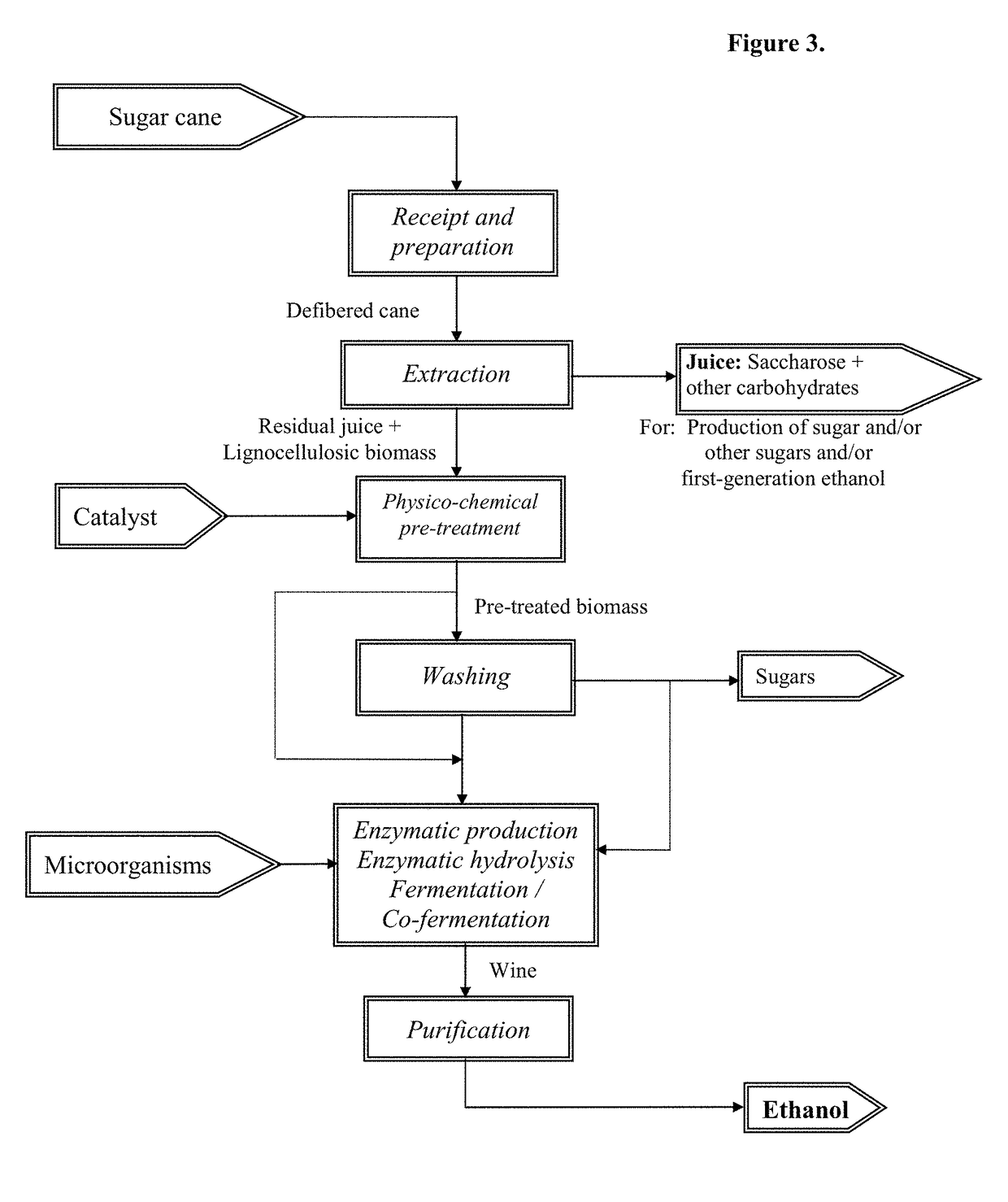Method for processing vegetable biomass
a technology for vegetable biomass and processing method, which is applied in the field of energy-saving process for the treatment of plant biomass, can solve the problems of reducing the efficiency of the process, and reducing so as to achieve the effect of increasing the availability of sugars and reducing the energy cos
- Summary
- Abstract
- Description
- Claims
- Application Information
AI Technical Summary
Benefits of technology
Problems solved by technology
Method used
Image
Examples
example 1
on of Carbohydrates and Ethanol from Sugar-Cane Bagasse Produced by Means of a Non-Conventional Preparation (Using Chopped Sugar Cane or Bagasse from the First or Second Set of Rollers), Using the AFEX / AHFEX (Ammonia or Ammonium Hydroxide Fiber Explosion) Alkaline Catalytic Pre-Treatment, Enzymatic Hydrolysis, and Ethanolic Fermentation
[0103]The alkaline AFEX / AHFEX pre-treatment operation consists of loading the biomass (without any prior treatment, such as washing, milling, or granular metrics operation) [into a reactor]. After loading of the discontinuous reactor and during the heating process, the impregnation of the biomass with a chemical agent (i.e., ammonia or ammonium hydroxide) is begun. After the operational pressure and temperature (7.0 to 15.0 kgf / cm2 and 90° C. to 160° C.) have been reached, the reaction takes place, with the mixture being left to “cook” during the operational period (ranging from 10 minutes to 120 minutes). Then the discharge valve located at the base ...
example 2
on of Carbohydrates from Sugar-Cane Bagasse Produced Through Conventional Milling Using STEX (Steam Explosion) Pre-Treatment in Non-Catalytic Systems
[0107]The steam-based pre-treatment operation consists initially of loading the biomass (without any prior treatment, such as washing, milling, or granular metrics operation) [into a reactor]. After the discontinuous reactor is loaded, heating is begun through the injection of saturated steam (20 to 23 kgf / cm2) in direct contact with the biomass present in the reactor (see the typical operating profile shown in FIG. 10, so as to reach the operational pressure and temperature (12.0 to 20.0 kgf / cm2 and 160° C. to 220° C.), using an appropriate heating ramp-up. The reaction per se then takes place, with the mixture being left to “cook” during the reaction time (ranging from 2 minutes to 20 minutes). Then the discharge valve of the reactor is opened, so as to cause the sudden decompression of the reactor, with the expulsion of the mass into...
example 3
on of Carbohydrates from Sugar-Cane Bagasse Produced Through Conventional Milling Using STEX (Steam Explosion) Pre-Treatment in Autocatalytic Systems
[0118]Tables 7 and 8 show the composition of the bagasse that was pre-treated with steam in systems that were auto-catalyzed with acetic acid obtained from the deacetylation of the hemicelluloses (xylans). As can be seen, the said bagasse displayed a significantly higher glycan content and a significantly lower xylan content than had been detected in the original biomass. This change is due essentially to the intense and selective removal of the hemicelluloses during the process, as also indicated by the acidity of the resulting biomass (with a pH within the range from 3 to 4), as well as by the higher xylose content and the reduced glucose content of the soluble solids. As can be seen, there is a clear predominance of non-saccharide compounds among the soluble solids, indicating the likely conversion of carbohydrates (particularly xylo...
PUM
| Property | Measurement | Unit |
|---|---|---|
| heights | aaaaa | aaaaa |
| diameters | aaaaa | aaaaa |
| temperatures | aaaaa | aaaaa |
Abstract
Description
Claims
Application Information
 Login to View More
Login to View More - R&D
- Intellectual Property
- Life Sciences
- Materials
- Tech Scout
- Unparalleled Data Quality
- Higher Quality Content
- 60% Fewer Hallucinations
Browse by: Latest US Patents, China's latest patents, Technical Efficacy Thesaurus, Application Domain, Technology Topic, Popular Technical Reports.
© 2025 PatSnap. All rights reserved.Legal|Privacy policy|Modern Slavery Act Transparency Statement|Sitemap|About US| Contact US: help@patsnap.com



